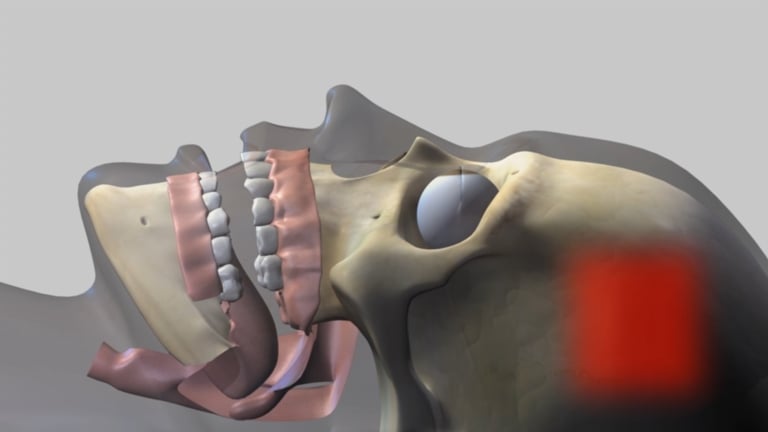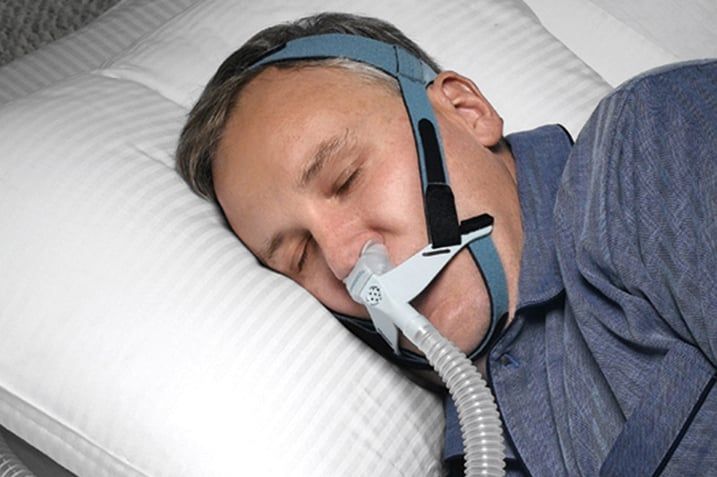Sleep Apnea
Obstructive Sleep Apnea
Adam J. Barr, DDS, FAGD works with sleep apnea dental patients in the Eustis area. Obstructive Sleep Apnea is very common and if left untreated can cause individuals to stop breathing during their sleep for a minute or more. Each time this happens the brain will wake a person up for a moment in order to get them breathing again, which results in sleep being interrupted frequently and leaving the individual tired throughout the day.
Obstructive Sleep Apnea
If your bed partner notices that you snore or gasp for air regularly while sleeping, you may have Obstructive Sleep Apnea (OSA). Not everyone who snores has OSA. However, everyone who has OSA does snore. OSA is a condition in which people stop breathing for short periods, several times if not hundreds of times per night. Sleep apnea affects 13-17% of all adult Americans. Undetected sleep apnea is serious and can lead to obesity, diabetes, high blood pressure, heart attack, stroke and even death. Severe Obstructive Sleep Apnea can take 10 to 15 years off one's life.
Obstructive Sleep Apnea Symptoms
- If you are told by your bed partner that you snore or gasp for air during your sleep.
- If you are tired and un-rested after sleep and need to take frequent naps.
- If you have hard-to-treat blood pressure.
- If you are obese and/or have a collar size larger than 16 inches for women or 17 inches for men.
- If you wake up with a dry or sore throat.
- If you are irritable in the morning or have morning headaches.
- If your legs feel twitchy at night.
Obstructive Sleep Apnea Diagnosis
OSA can only be properly diagnosed by a board-certified M.D. in sleep medicine. This is done either through spending a night in a sleep lab connected to wires and monitors or by a home sleep test. In our office, we have home sleep testing monitors which you can wear to bed in your own home. When you bring the testing unit back to our office, we will upload the data stored in the unit to a board-certified sleep physician who will diagnose if you have sleep apnea. The physician will also determine how severe the sleep apnea is and prescribe what treatment options would be appropriate. Treatment options include dental, medical or surgical.
Obstructive Sleep Apnea Treatment Alternatives
Until recently, the recommended solution was to pump air into the blocked passage by the use of a Continuous Positive Airway Pressure (CPAP) machine. It's appearance has been described like being a bulky jet pilots mask to something resembling a Darth Vader's mask. It's cumbersome, noisy and uncomfortable, but it will keep you alive. The problem is that most people use the mask on an inconsistent basis, which provides only limited value and still puts the patient at risk. Recent advancement in a specialized custom dental fabricated mouth guard provides a more comfortable solution. This small mouthpiece that rests inside the sleeper's mouth moves the jaw forward creating suction to open the throats airway. Research hasn't yet proven that treatment can reverse Obstructive Sleep Apnea, but does decrease or eliminate many of the bad outcomes.

Causes Of Sleep Apnea
Obstructive Sleep Apnea occurs when the tongue is stuck against the back of the throat blocking the upper airway causing air flow to stop. Obstructive Sleep Apnea is a very common chronic disorder that may create respiratory or cardiovascular complications if left untreated.
Signs that you may have Obstructive Sleep Apnea are:
- Snore loudly
- Gasp for air or pause breathing during sleep
- Feel sleepy during the day and sometimes fall asleep at inappropriate times
- Wake up more than 2 times a night to use the bathroom.
- If you are more than 30 pounds over weight with a large neck size.

CPAP
One way to treat people who have sleep apnea is a continuous positive airway pressure (CPAP) device. A CPAP device includes a mask, tubes and a fan. It uses air pressure to push the tongue forward and open the throat thus allowing air to properly flow through. It reduces snoring and prevents apnea disturbances.
You should put your CPAP device on whenever you sleep, even for naps. A CPAP device does not cure sleep apnea; but, when you use the device correctly, your sleep problems should get much better.
Snoring
Snoring is caused when the muscles and soft tissue in the throat and mouth relax making the breathing airway smaller. A relaxed and/or collapsed airway produces soft tissue vibrations during breathing and snoring is the result.
An oral appliance can greatly reduce or stop snoring for most people.
Snoring Appliance
A snoring appliance is an oral appliance that resembles an athletic mouthpiece. Small and flexible, it has no moving parts, masks, hoses, or batteries. Generally made from sterile plastic it is easy to clean with a regular toothbrush.
Custom fit by a dentist in one simple, painless visit. Fit to the patient's teeth to keep the upper and lower jaw in position when the jaw and throat muscles relax during sleep. This keeps the airway open providing restful, quiet sleep.